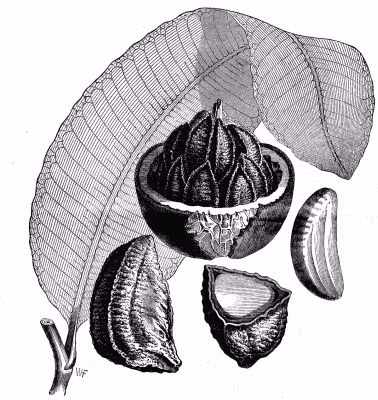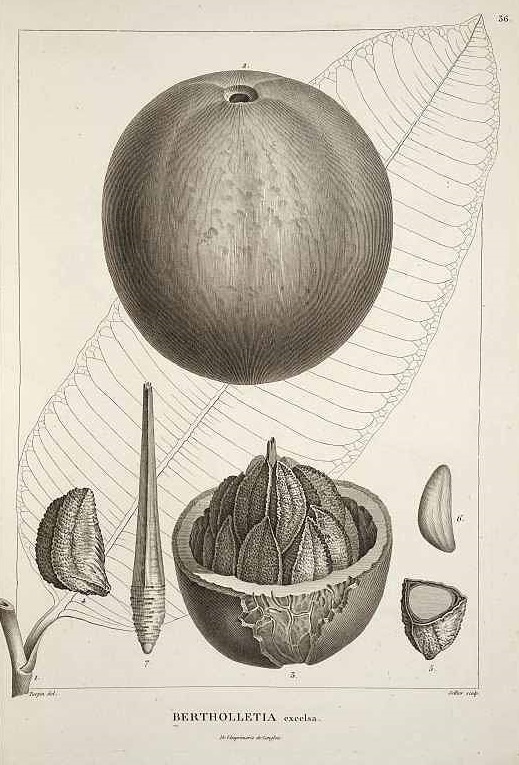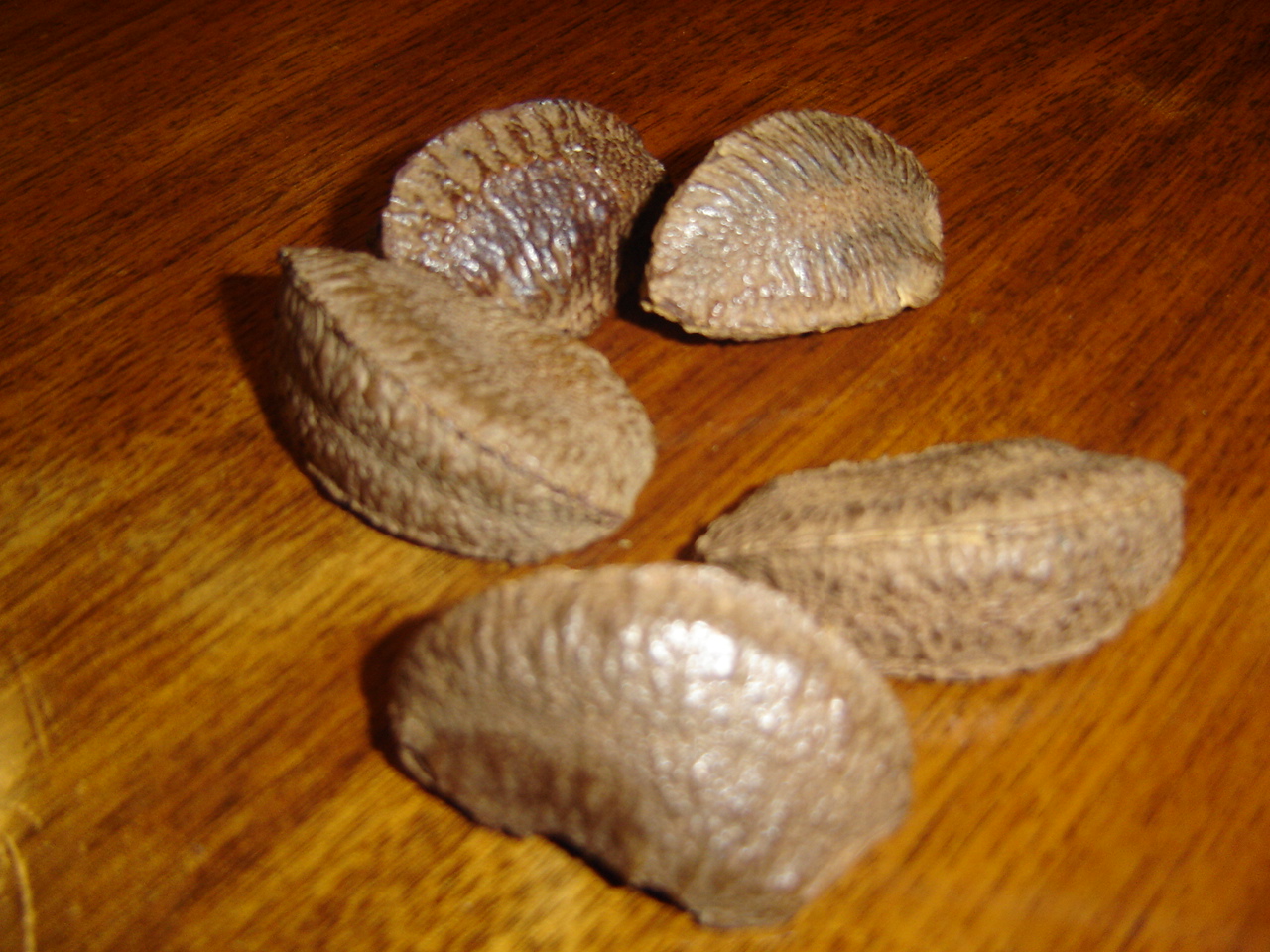! Nouveau site ici !
Vita > Plantae > Magnoliophyta > Magnoliopsida > Lecythidales >
Lecythidaceae > Bertholletia
Bertholletia excelsa
(Noyer brésilien)

 | *****
| *****
Vita > Plantae > Magnoliophyta > Magnoliopsida > Lecythidales >
Lecythidaceae > Bertholletia
Bertholletia excelsa
(Noyer brésilien)

Un très grand arbre atteignant 55-60 m de haut. Le tronc peut faire 14 m autour. L'écorce est rouge ou grise et profondément craquelée. Les feuilles sont vert foncé et virent au brun rougeâtre lorsqu'elle... (traduction automatique)
→suite
⬀
Le  donne accès au menu
donne accès au menu (c'est votre point de repère) 😊 ;
En dessous vous avez la classification, à partir de la vie (Vita, premier rang) jusqu'à la classe au dessus de la plante, dont vous trouvez ensuite le nom scientifique/botanique (latin) puis le nom commun (français), le cas échéant ;
C'est aussi un lien vers la fiche complète (tout comme la ✖, en bas à droite, et le +, en dessous de la description) ;
Vient alors l'illustration (ou ce qui la remplace, en attendant), la comestibilité :
Et en bas
⬂







